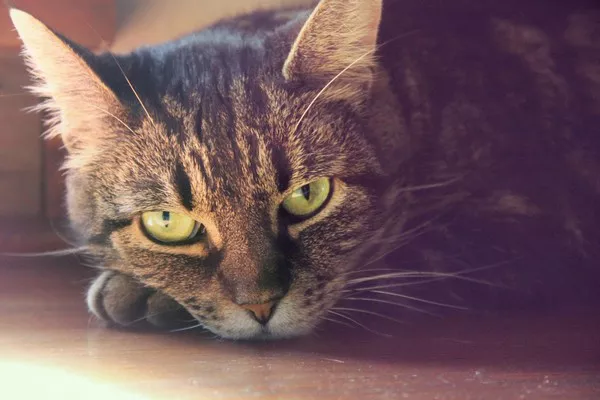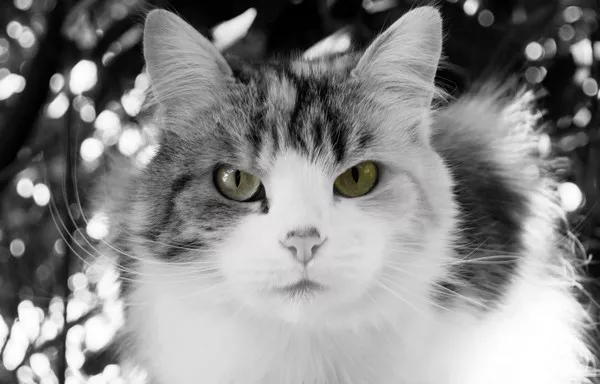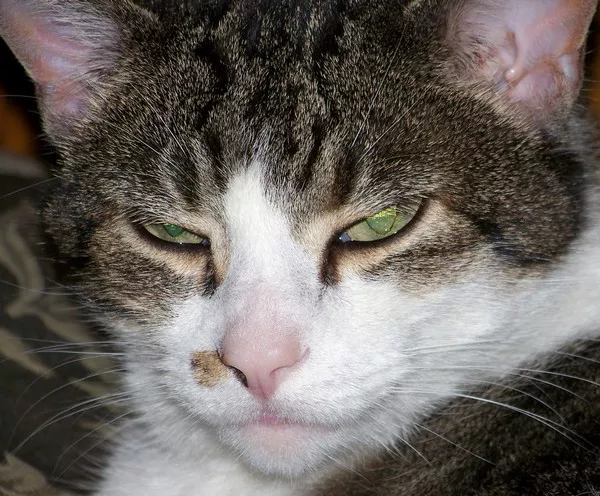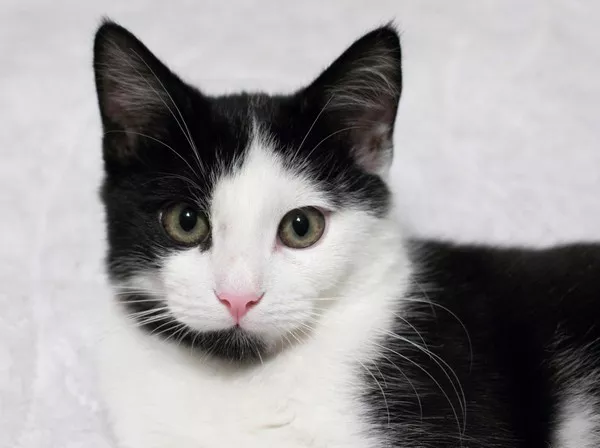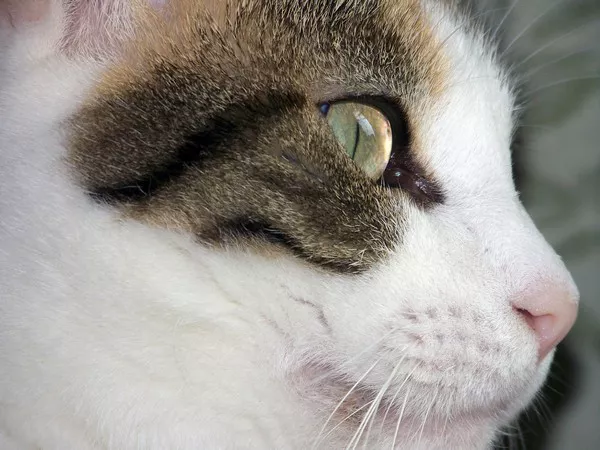Calico cats are among the most visually striking felines, known for their unique tricolor coats that typically feature patches of white, orange, and black. However, beyond their captivating appearance, calico cats, like all pets, face various health challenges. This article delves into the health issues associated with calico cats, particularly focusing on the genetic implications of their coat color, common health problems, and essential care practices to ensure their well-being.
Genetics and Health Implications
Calico cats are not a distinct breed but rather a color pattern that can occur in various domestic cat breeds. The genetics behind calico coloration is fascinating and primarily involves the X chromosome. Female cats have two X chromosomes (XX), while male cats typically have one X and one Y chromosome (XY). The genes responsible for coat color are located on the X chromosome. For a cat to exhibit a calico pattern, it must have two X chromosomes, which is why the majority of calico cats are female.
In rare cases, male calico cats can exist, possessing an extra X chromosome, resulting in an XXY chromosomal pattern. This genetic anomaly leads to a condition known as Klinefelter’s syndrome, which has significant health implications. Male calico cats with this condition may experience various health issues due to the additional X chromosome.
Klinefelter’s Syndrome
Klinefelter’s syndrome is characterized by several health challenges, including:
Cognitive and Behavioral Issues: Male calico cats may exhibit cognitive impairments, which can manifest as learning difficulties or behavioral problems. They may be more prone to anxiety and stress-related behaviors compared to their female counterparts.
Bone Density Problems: The additional X chromosome can lead to reduced bone mineral content, making these cats more susceptible to fractures and other skeletal issues. Brittle bones are a significant concern, necessitating careful monitoring and management.
Obesity and Metabolic Disorders: Male calico cats often have a higher body fat percentage, increasing their risk for obesity-related conditions such as diabetes and joint pain. Weight management becomes crucial in ensuring their overall health.
Fertility Issues: Male calico cats are typically sterile, which is another consequence of Klinefelter’s syndrome. This sterility can affect their behavior and social interactions with other cats.
Common Health Problems in Calico Cats
While female calico cats do not face specific health issues directly related to their coat color, they are still susceptible to various health problems common among domestic cats. Regular veterinary care is essential for early detection and prevention of these issues. Some common health problems include:
Dental Disease: Like all cats, calicos are prone to dental issues, including periodontal disease, gingivitis, and tooth decay. Regular dental check-ups and at-home dental care, such as brushing, can help maintain oral health.
Obesity: Calico cats, particularly females, can be prone to obesity, especially if they lead a sedentary lifestyle. Obesity can lead to numerous health issues, including diabetes, arthritis, and heart disease.
Kidney Disease: Chronic kidney disease is a common condition in older cats, including calicos. Regular veterinary check-ups can help monitor kidney function and detect any early signs of disease.
Hyperthyroidism: This condition, characterized by an overproduction of thyroid hormone, is common in older cats. Symptoms may include increased appetite, weight loss, and hyperactivity.
Urinary Tract Issues: Calico cats can be susceptible to urinary tract infections (UTIs) and other urinary issues. Signs of urinary problems include frequent urination, straining to urinate, or blood in the urine.
See Also: What Are Common Health Problems In Older Cats?
Preventive Care and Management
To ensure the health and longevity of calico cats, pet owners should adopt a proactive approach to care. Here are essential practices to consider:
Regular Veterinary Check-ups: Annual veterinary visits are crucial for monitoring overall health, updating vaccinations, and conducting routine screenings for common health issues. As calico cats age, more frequent check-ups may be necessary.
Balanced Diet: Providing a high-quality, balanced diet is fundamental to maintaining a healthy weight and preventing obesity. Consult with a veterinarian to determine the best diet based on the cat’s age, weight, and health status.
Exercise and Enrichment: Regular physical activity is vital for maintaining a healthy weight and preventing obesity. Engage calico cats in playtime with interactive toys, scratching posts, and climbing structures to stimulate their natural hunting instincts.
Dental Care: Implementing a dental care routine, including regular brushing and dental treats, can help prevent dental disease. Regular veterinary dental cleanings may also be necessary.
Hydration: Ensure that calico ave access to fresh water at all times. Some cats prefer running water, so consider providing a cat water fountain to encourage hydration.
Weight Management: Monitor your cat’s weight closely and adjust their diet and exercise regimen as needed. If weight gain occurs, consult a veterinarian for guidance on weight management strategies.
Grooming: Depending on the coat type, regular grooming may be necessary to prevent matting and hairballs. Long-haired calicos require more frequent grooming than short-haired varieties.
Mental Stimulation: Calico cats are intelligent and curious, requiring mental stimulation to prevent boredom. Puzzle toys, interactive play, and training sessions can help keep their minds active.
Understanding Behavior and Temperament
Calico cats are often described as having vibrant and spirited personalities. While individual temperaments can vary, calicos are generally known for their playful and affectionate nature. They may exhibit some behavioral traits influenced by their genetic background:
Independence: Calico cats tend to be independent and may not require constant attention. However, they also enjoy companionship and can form strong bonds with their human caregivers.
Vocalization: Many calico cats are known for being vocal, expressing themselves through meows and chirps. This vocalization can be a way for them to communicate their needs and desires.
Playfulness: Calicos are often playful and enjoy engaging in interactive play. Providing toys that mimic hunting behaviors can help satisfy their natural instincts.
Affectionate Nature: While they may have a reputation for being feisty, calico cats can also be very affectionate and loving towards their owners. They often enjoy cuddling and spending time with their human companions.
Conclusion
Calico cats are not only beautiful but also possess unique health considerations that owners should be aware of. Understanding the genetic implications of their coat color, particularly in male calicos with Klinefelter’s syndrome, is crucial for providing appropriate care. Regular veterinary check-ups, a balanced diet, exercise, and mental stimulation are essential components of maintaining their health and well-being. By being proactive in their care and understanding their specific needs, calico cat owners can help ensure their feline companions lead long, healthy, and happy lives.
Related Topics
What Health Problems Do Ragdoll Cats Have?








